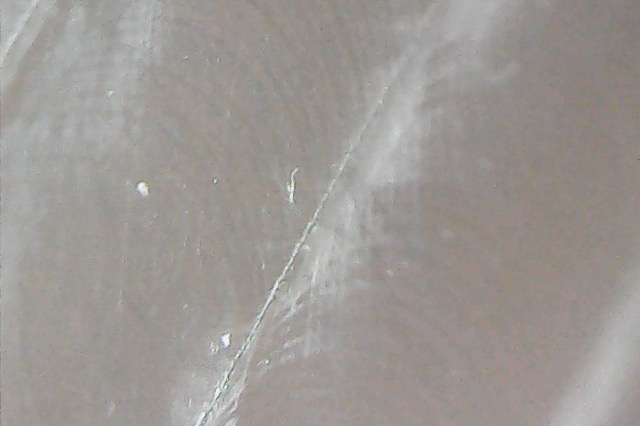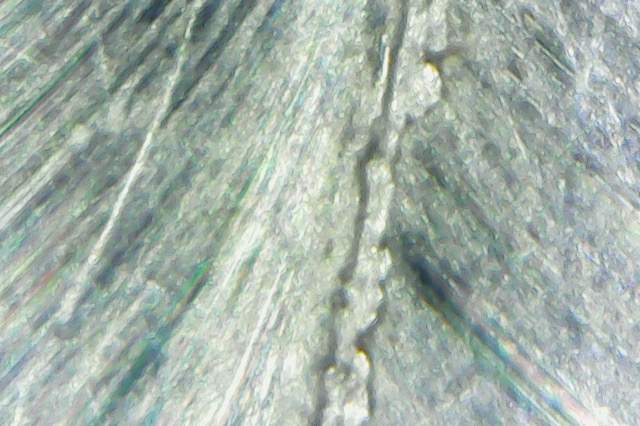Some of you have been on the receiving end of discussions that contain me saying “Look at the endmill under magnification” - here’s why.
This HSS endmill was being used to cut aluminum. There is a tiny chip out of the corner of the cutting surface (yes, it’s a chip, not just dust, gunk or something stuck to it)

Here’s a wide-ish view of the cut it left. It’s deceptive… If you run your finger over it, it feels like the router is out of tram.

If we look closer, it’s not! That ridge is about .001" high, give or take, and it’s not an undercut on one side of the cut path.

That tiny chip, which is essentially impossible to see, is leaving a little ridge of mashed up chips along the outside of the cut. (was a facing operation with a 80% stepover on a .25" end mill).
So, if you’re getting cuts that aren’t of the quality you want, the first, easy thing, to do is look at the endmill under a loupe at 5-10x magnification. You cannot inspect an endmill by plain-old-eyeball and expect to always see the problem. Chips in the cutting edges are very hard to see.